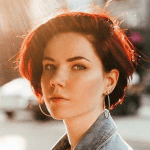IoT Technology in Retail: Use Cases, Challenges, and Technologies
The retail industry is changing rapidly, and business owners are finding new ways to improve their supply chain, interaction with customers, and marketing. IoT technology adoption in retail was only accelerated by COVID-19 pandemic, and as major players like Amazon are going towards contactless purchases and process optimization, smaller retailers are also hopping on the IoT trend.
What is IoT in retail and why is it important?
Internet of Things is a technology that connects multiple devices into one ecosystem, where they’re able to communicate with each other, send data to the hub and trigger certain responses from the system. The most common areas where IoT is widely used are smart homes, industrial automation and agriculture.
IoT is also widely used in retail, and each year its popularity in this domain is growing. The first company to set up a precedent was Amazon that came up with the idea of cashierless stores and robots that accelerate the delivery. News about such smart retail stores opening in a few cities in the US made people say it’s the future of IoT in retail.
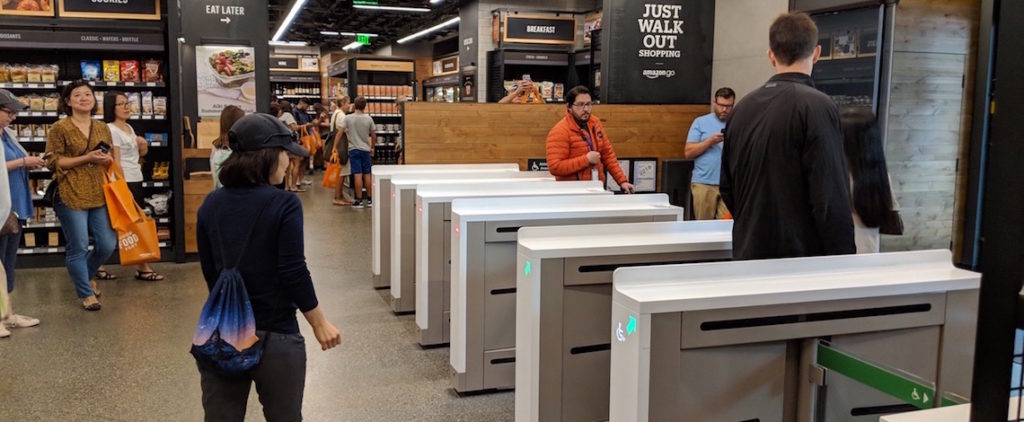
This may be true, but even without building a cashierless store you can benefit massively from the IoT technology. What are IoT applications in retail industry?
The most important thing a retail business can get from IoT is advanced data collection. With IoT devices you can collect all kinds of data about:
- Your delivery progress and the whereabouts of your shipments
- Your customer behavior inside a store
- Wait times at the checkout
- Inventory
… and more.
The Grand View Research states that in 2020 the Internet of Things in retail market was worth almost $32 billion, and it’s expected to grow at a CAGR of 26% between 2021 and 2028.
According to Markets and Markets, the IoT industry in retail will be worth $35.5 billion by 2025, and will grow at a CAGR of 19.6% between 2020 and 2025.
The factors that drive growth of IoT in retail include:
- Increased customer expectations
- Availability of cheap smart devices
- Easier implementation of IoT in retail
Businesses of all kinds are adopting IoT. Currently, 70% of businesses have IoT projects in development or already live, and 59% of businesses use IoT for increasing the efficiency of their internal business processes. Retail technology statistics show that IoT is an important part of this industry, and its application will only become more widespread over the years.
Let’s talk about the benefits of IoT in retail, and then discuss how exactly you can use it to improve your business and increase revenue.
Benefits of IoT for retail businesses
According to PWC, 93% of executives believe that they gain significant benefits from the implementation of IoT, and they outweigh the risks. What are these benefits?
Less waste
Grand View Research states that most businesses use IoT for their internal processes, for example for store monitoring, supply chain and inventory management, and delivery optimization. Among retailers, supply chain automation and management is a №1 reason to adopt IoT technology.
IoT technology allows businesses to effectively predict demand, and thus reduce oversupply. This is especially important for retailers that sell fast-spoiling products.
Optimizing in-store experience
There are lots of IoT devices in retail that help track in-store customer behavior. Beacons, cameras, on-shelf displays, and price trackers can help you see how your customers move around the store, what interests them most, and find out why some shoppers leave your store without any purchases.
Finding the best product placement
IoT cameras and sensors paired with powerful analytics will help you learn about customer journeys and see what they look for in a particular area of the store. You can test your marketing hypotheses by placing products in a particular order and finding the most effective layout for your store.
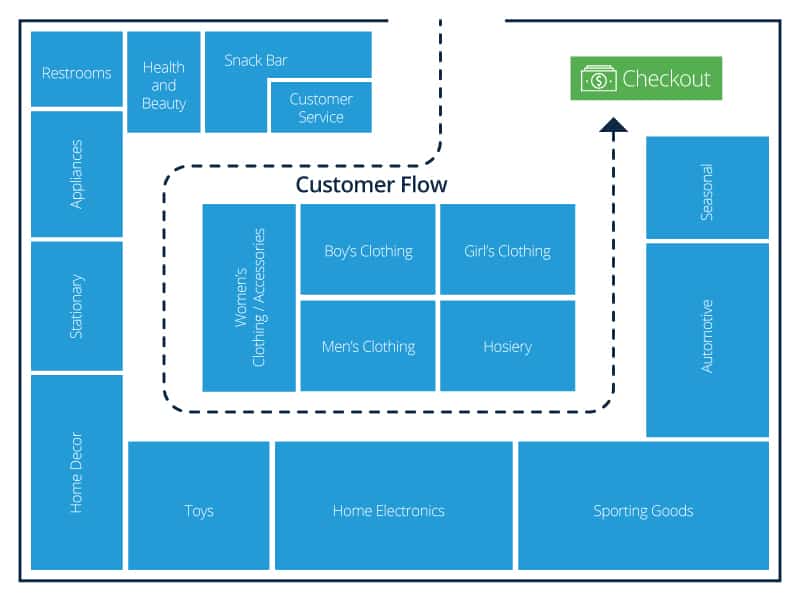
Effective inventory management
IoT sensors can help store managers see how many products there are on the shelves, and what products need to be replenished. The same principle applies in warehouses, where managers can see what products they need to order first from their suppliers.
Omnichannel experience
As I already mentioned, most retailers use IoT technology to optimize their internal operations. However, IoT can also be applied to customer experience. By using IoT devices, you can track your customers and provide them with personalized offers right when they are in your physical store. This can help you increase sales and loyalty of your customers.
Although there are many IoT benefits in the retail industry, many businesses find it quite challenging to implement it correctly. Let’s discuss the most common challenges of the Internet of Things in the retail industry and find out how to overcome them.
Challenges of IoT in retail industry
Cybersecurity and privacy
According to the PWS survey, 48% of executives that already have IoT projects in progress admitted that privacy and cybersecurity concerns along with lack of regulation slowed down their IoT integration process. Customers of retailers who adopted the IoT technologies are also concerned about their personal data and privacy, though they still embraced this technology as it brings
Research and Markets made a large report on the current state of IoT, and they found out that data protection is currently the priority for enterprises that use IoT in their business.
Operational challenges
According to the report, many businesses struggle with large amounts of data that come from IoT devices of various kinds. How can you deal with it? Many businesses plan to optimize their current IoT systems: for example, use different kinds of data storage strategies, like hybrid or multi-cloud storage.
Some teams simply don’t have the capacity to take on IoT projects, others find out that their legacy system just isn’t capable of supporting IoT technologies.
Technical issues remain the biggest challenge for businesses, as they rarely have issues with building business cases for their IoT systems. The maintenance and setup, however, can be hard, so most businesses look for providers that would help them integrate IoT solutions in retail and ecommerce into their processes and regularly maintain them.
According to PWC, the spending on IoT is expected to grow globally, with IoT devices being the most expensive part of budgets.
Lack of expertise
In order to use IoT technologies effectively, you need to not only have technical expertise in your company, but also have analytics and predictive modeling skills. Not every business is capable of finding and hiring experts with such expertise.
Retail in IoT: use cases
Let’s now discuss how exactly you can use IoT in your retail business. We’ll start from using IoT for internal operations, and then move towards IoT use cases in retail marketing and customer service.
Inventory management
This is a top use case for IoT in retail industry. Optimizing the inventory is one of the biggest issues in retail right now, and businesses try to automate these processes as much as possible. IoT can help you track inventory and analyze data on how popular each category of product is. This allows you to predict the demand and adjust your supply automatically.
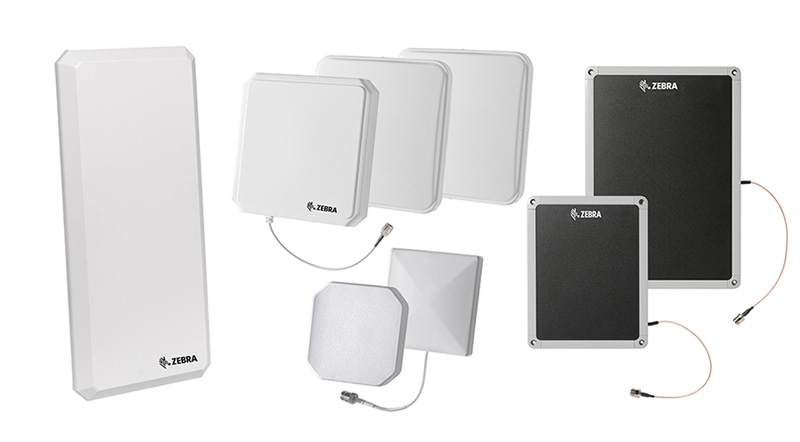
Here are some IoT technologies used for inventory management:
- MIT Drone Inventory System — a drone that scans inventory and sends alerts if some products are no longer available
- RFID antennas — scan the inventory and also alert managers if they are about to run out of a particular product
RFID-based technology can also be customer-facing. For example, Lululemon uses it to let the customers know in which stores their desired products are available at the moment. Instead of manual tracking, their system can do it automatically.
Location tracking
Delivery is one of the biggest challenges for modern retail, and it became especially evident during the pandemic when the demand for online shopping and delivery skyrocketed. You can use IoT in retail logistics to track products as they’re being delivered, predict the delivery time and increase logistics transparency.
You can also build a customer-facing IoT system that will show customers where their products currently are.
Location tracking is useful for locating your staff as well. Track your employees’ movements around the warehouse and help them to find goods more efficiently.
Loss and theft prevention in retail using IoT is also growing in popularity, and location tracking devices are used for tracking assets and products.
Proactive maintenance
Maintaining equipment is much cheaper than repairing it when it’s broken. When something breaks unexpectedly, it can result in monetary and reputational losses as well, so it’s crucial to proactively maintain all equipment and never let it break down.
IoT sensors can help you detect issues with your equipment long before they break, and notify managers about what needs to be fixed right away. Transportation, manufacturing and utilities businesses have been using IoT for this for years, and retail can benefit from it too.
Shopper traffic monitoring
There are lots of IoT devices that allow retailers to analyze their in-shop traffic. These devices include smart cameras, beacons, and sensors, that create heat maps of customer movements around the store. By using this information you can choose the best place for certain products, where they’ll be more likely to be purchased.
Prism Skylabs is one of the companies that create such traffic monitoring systems. They turn information from sensors and cameras into valuable insights you can see on your dashboard.
Smart shelves
Smart shelves use RFID technology to track the products available and notify managers if they need to be replenished. These shelves can also connect to customers’ shopping list applications and alert a user if a product on the list is nearby on the shelves.
How do smart shelves work? They use three components: an RFID tag, a reader and an antenna. Data from an RFID tag is transferred to an IoT platform through an antenna. Then, a reader interprets this data and collects it.
This technology shares all the collected data with a store manager after turning it into clear insights on customer behavior and stock.
Personalized notifications
Location-based notifications, geofencing and IoT beacons in retail are widely used for making targeted and extremely personalized offers to their customers. This allows retail businesses to increase their sales and consequently their revenue.
At Mobindustry we also worked on this technology when we built a shopping application for one of the largest retailers in Ukraine. We implemented a location-based feature that used geofencing to send notifications to users when they were nearby an offline store. Inside a store we used iBeacons to send personalized offers to customers.
Starbucks implemented a similar technology by notifying customers about new coffee brews and promotions when they went by one of their shops.
Facility management
Clean, pleasant and safe environment is extremely important for the success of your retail business. IoT devices can help streamline tasks like cleaning and disinfection by tracking the most used areas and notifying managers about what needs cleaning at the moment.
IoT sensors can also detect when the supplies are running low, so that your managers can replenish them in time and increase the efficiency of the staff that takes care of the in-store environment.
Smart sensors can also help you save money on energy bills by controlling the energy consumption, temperature, lighting and ventilation automatically. They can also detect abnormal energy consumption and detect wasted resources.
Product storage monitoring
Each year retailers lose around $70 million on fast-spoiling products that go to waste. With IoT technology you can significantly reduce waste by optimizing your storage. IoT sensors can track and control various environmental factors like temperature, humidity, light intensity, air quality inside your storage facilities, containers, vehicles and other places where you store perishable goods.
Asset tracking
Apart from tracking your products, you can also track inventory such as shopping carts and baskets with the help of IoT devices. Retrieving all the assets takes a long time, especially if your staff needs to find them themselves. Lost and stolen carts can cost a business a lot of money, so it’s important to track them and make sure they are in a good condition.
Most businesses use IoT for their internal processes, for example for store monitoring, supply chain and inventory management and delivery optimization.
IoT devices can help you locate all the carts in your store and automatically lock their wheels, so they stay in place. This prevents loss and theft, and also helps you make sure there are always enough carts for your customers that are coming in.
Contactless payments and cashierless checkouts
Have you ever seen customers walking out of your store because of long lines? This is a common issue for retailers, and contactless and cashierless checkouts is what can help you streamline the purchase process while also saving money on hiring cashiers.
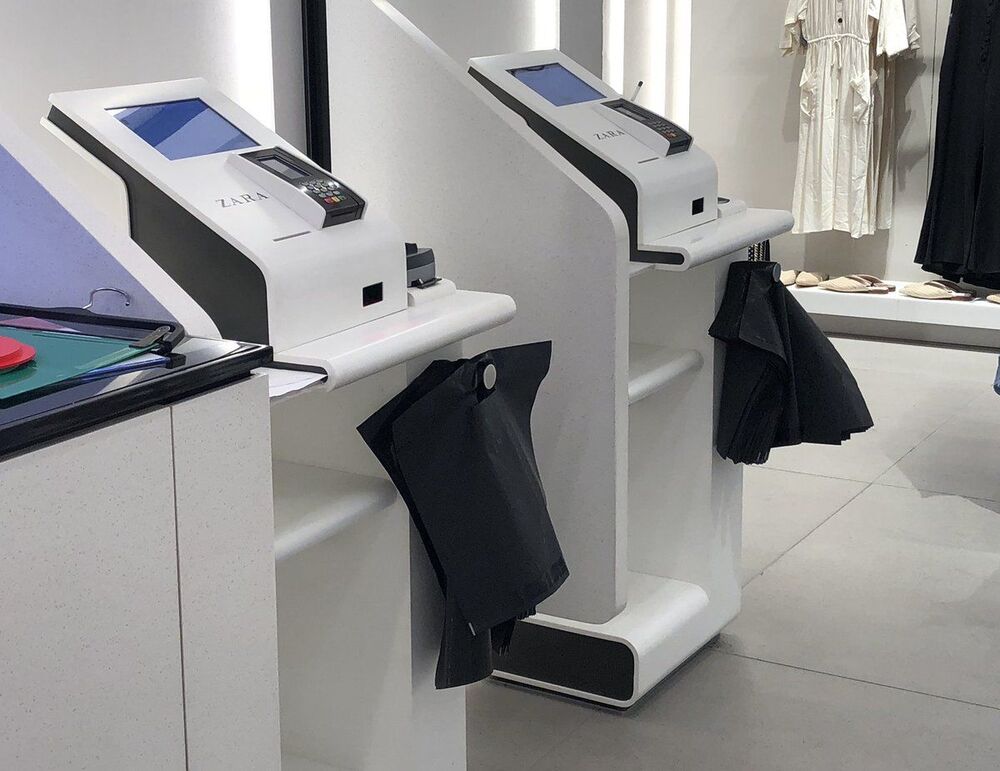
You can install a POS terminal where customers can scan products themselves and pay with either card or cash. However, these terminals can also lead to queues, so you can follow the Amazon example, where customers can simply walk out of the store, and a system will automatically charge them for all the products in the virtual cart. How are they added? Amazon uses a system of sensors and cameras to track customer’s actions and register what they put in their cart.
Personalized discounts and loyalty programs
Retaining existing customers is just as important as attracting new ones, so you can use IoT creatively and engage your existing customers into making purchases. Using IoT you can track their movements around the store and offer discounts right when they stop in front of a particular product.
Another way to engage your customers is to gamify their experience. This will work especially well if your target audience is people with children. Turn their shopping experience into a game, allow them to collect points and turn them into bonuses your customers can spend on products at your store.
Automation with robots
You can free your staff from mundane tasks by using robots. Robots are used in many domains for automation, and your business can benefit from them as well. Use robotics to help your customers navigate around the store and get answers to their questions. You can also use them to help move or track products in the store or in the warehouse.
How can Mobindustry help you set up IoT in your retail business
At Mobindustry we have experience in creating software for retailers of all sizes. We also created multiple IoT applications for various businesses, so if you’d like to power your business with the IoT technology, we can definitely help.
We’ll be able to recommend the best IoT retail use cases for your particular needs, after we learn more about your business and your goals. Whether you’d like to optimize your supply chain or improve the customer experience, we’ll pick the right technology for you.
What are the steps of building an IoT system for your retail business?
- Define your goals. You need to know exactly what you want to achieve with building an IoT system, otherwise it will be easy to lose focus. You need to define your expectations and express them in numbers. What profit are you planning to gain? How much are you willing to invest in it?
- Communicate with the vendor. Your vendor is a partner who has experience in building IoT systems for businesses, so they should be able to choose the optimal technologies for your particular case.
- Get a technical specification. After your vendor collects all the necessary information, they will turn your expectations into a detailed technical specification that defines everything from technologies and features to devices and key stakeholders. At this stage we also help you choose the best hardware for your IoT system.
- Get a detailed estimate and a development plan. Now that developers and project managers know exactly what is needed, they’ll be able to estimate the whole project and divide the development process into sprints.
- Build, test and secure your retail IoT system. After each part of the system is built, it’s important to test it and make sure it’s secure. This continuous process of development and testing will ensure your system’s reliability and quality.
- Maintain and support your system. Now that your retail IoT system is live, it’s important to regularly maintain and update it. You need to also train your staff to use it, and improve the system according to your business needs.
If you’d like to build an IoT system for your retail business, we’ll be happy to help you and support your business at every step of the way. Contact us to learn about how much your project will cost and how to set it up along with your existing system.

